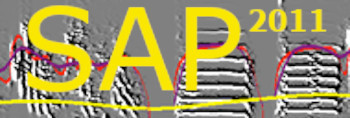Graphs & Displays
| < PREVIOUS: Saving data criteria | > NEXT: Batch & automation | |||||||||||||||||||||
|
|
||||||||||||||||||||||
|
Around the clock monitoring of vocal activity It is often useful to be able to see how vocal activity is distributed around the clock. Many animals vocalize more in certain hours, and also, the health of the animal, as well as the health of your system (bad microphones…) will reflect in the circadian distribution of sounds. Therefore, SAP2011 provides an automatically updated online display of vocal activity. Furthermore, it shows 6 different curves, to capture distribution of sounds of different ‘kind’.
Note: In the coming two chapters, we will present methods of classifying syllables to types, based on their feature distribution. Here we only present a first-pass, and rather arbitrary categorization of sounds. To do off-line assessment of vocal activity, we suggest you use the cluster analysis approach.
The ‘around the clock’ page tab includes 8 graphs, one for each bird. In each graph you will find a 24h count of six syllable types. Each count is performed within intervals (bins) of 15 minutes. Syllables are automatically (and arbitrarily) categorized into the following types:
Note: because types 4-6 are often much more rare than types 1-3 (and are often of main interest), the display shows a 2x multiplication of their values.
|
||||||||||||||||||||||
